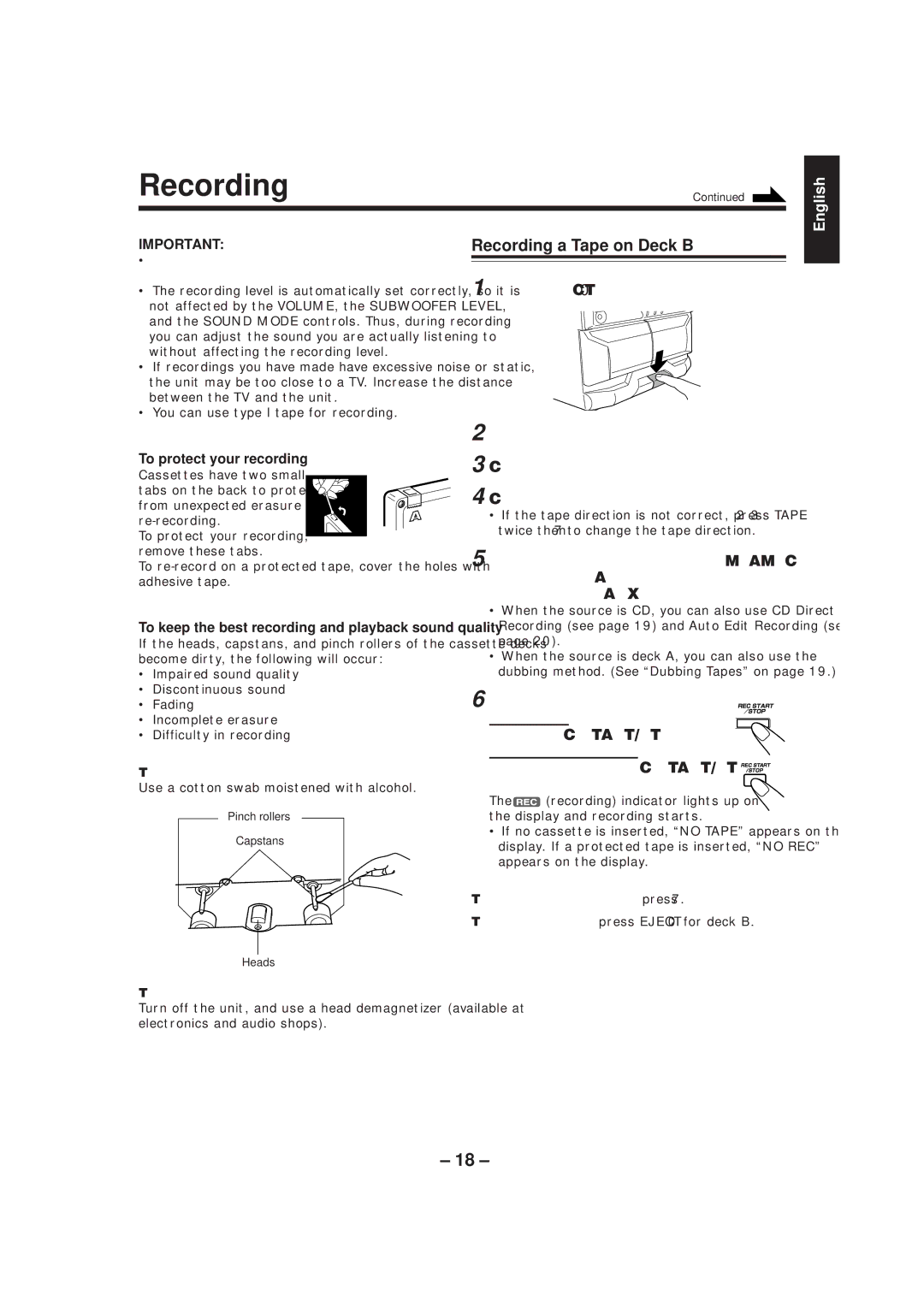CA-MXG70, CA-MXGT80 specifications
The JVC CA-MXGT80 and CA-MXG70 are remarkable compact audio systems that deliver impressive sound quality and a host of features designed for music enthusiasts and casual listeners alike. These systems are ideal for those who appreciate a powerful audio experience without compromising on space or style.One of the standout features of both the CA-MXGT80 and CA-MXG70 is their robust audio output. The CA-MXGT80 boasts a total power output of 80 watts, while the CA-MXG70 offers 70 watts. This ensures that even in larger rooms, listeners can enjoy rich, dynamic sound that fills the space. The speakers are designed to minimize distortion, providing clarity across a wide range of frequencies.
Both models come equipped with a built-in CD player, allowing users to enjoy their favorite albums with high-quality playback. They support various CD formats, including CD-R/RW, ensuring compatibility with a vast library of music. Additionally, they feature AM/FM radio with a digital tuner, enabling listeners to easily access their preferred radio stations.
In terms of connectivity, the JVC CA-MXGT80 and CA-MXG70 are versatile systems. They include auxiliary input ports, allowing users to connect external devices such as smartphones, tablets, or laptops. Furthermore, Bluetooth technology is incorporated into both models, facilitating wireless streaming of music from compatible devices without the need for cumbersome cables.
The design of the CA-MXGT80 and CA-MXG70 is sleek and modern, making them aesthetically pleasing additions to any room. The LED display provides easy access to all controls and settings, while the intuitive remote control enhances user convenience.
Another notable feature is the equalizer settings, which allow users to customize audio output according to their listening preferences. Whether enjoying pop, rock, jazz, or classical music, users can tailor the sound profile to suit their tastes.
Both audio systems also support USB playback, making it easy to play music directly from flash drives. This flexibility ensures that users can enjoy their digital music collections seamlessly.
In summary, the JVC CA-MXGT80 and CA-MXG70 are compact yet powerful audio systems that offer a wide array of features for music lovers. With excellent sound quality, multiple playback options, and modern connectivity, they are an attractive choice for anyone looking to enhance their audio experience. Whether for home use or as a portable solution, these models stand out in their category.

